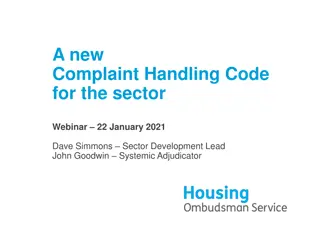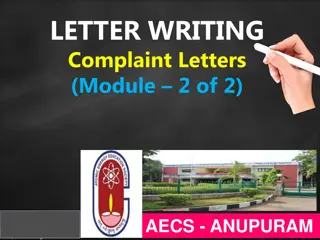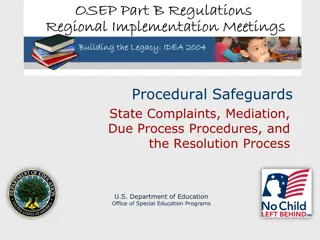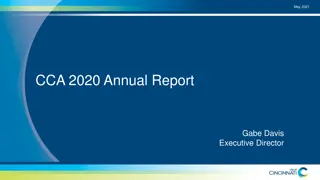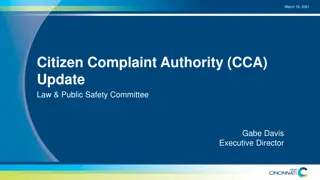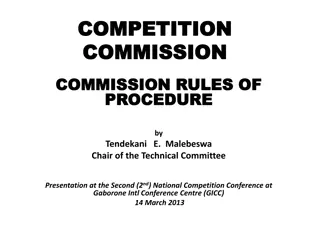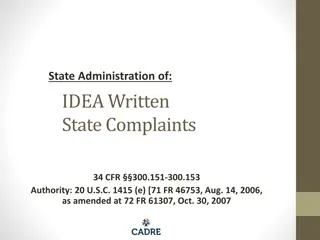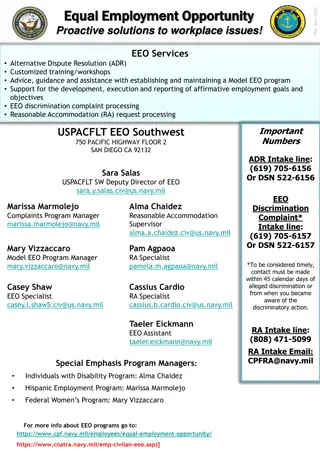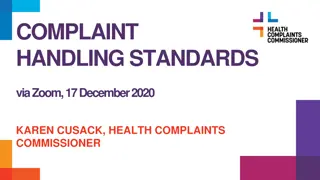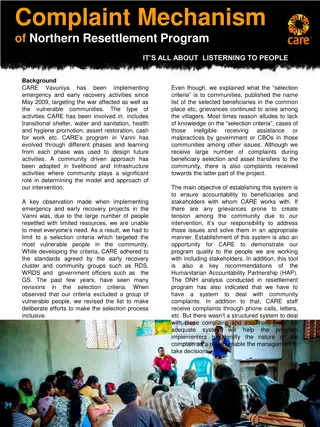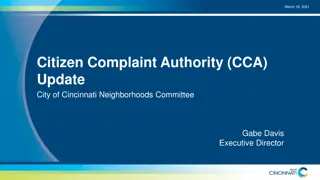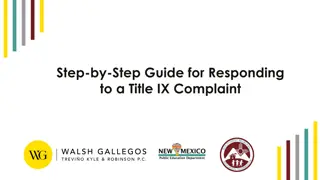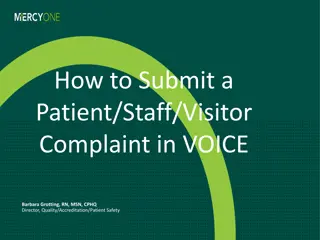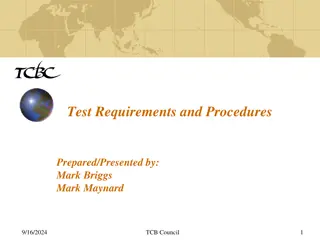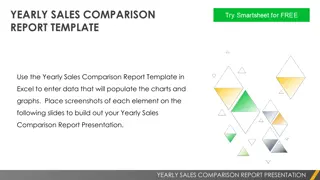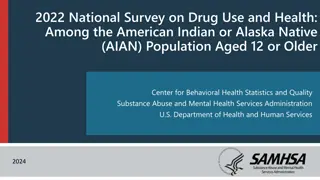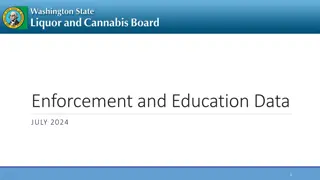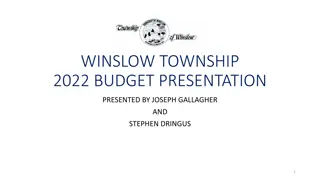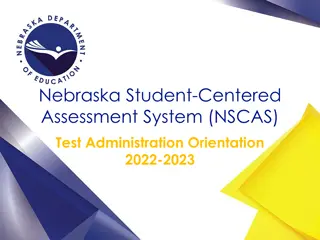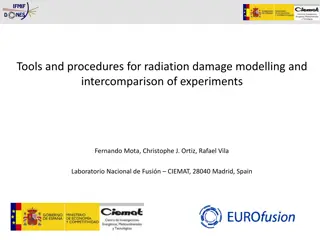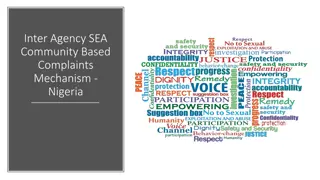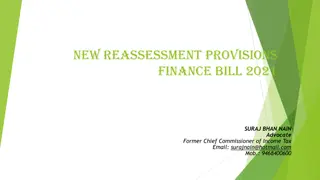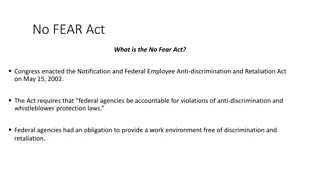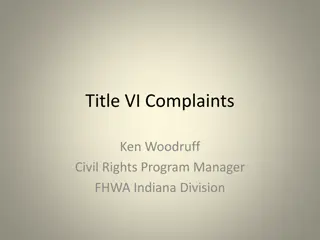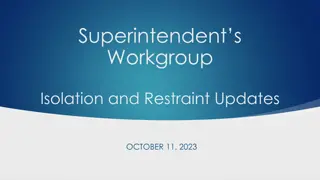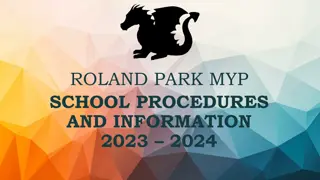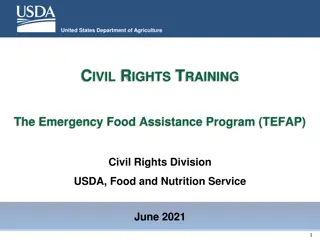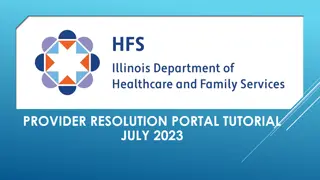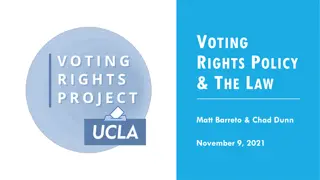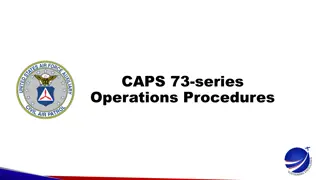Comparison of 2024 and 2022 AusNCP Complaint Procedures
This document compares the 2024 and 2022 versions of the Australian National Contact Point for Responsible Business Conduct complaint procedures. Changes include updates to align with the OECD Guidelines and emphasize expectations for multinational enterprises operating in or from Australia.
Download Presentation

Please find below an Image/Link to download the presentation.
The content on the website is provided AS IS for your information and personal use only. It may not be sold, licensed, or shared on other websites without obtaining consent from the author. Download presentation by click this link. If you encounter any issues during the download, it is possible that the publisher has removed the file from their server.
E N D
Presentation Transcript
2024 AusNCP complaint procedures Comparison of the 2024 and 2022 versions July 2024
AusNCP complaint procedures The Australian National Contact Point for Responsible Business Conduct (AusNCP) delivers on Australia's legal obligations to the OECD to: promote responsible business conduct standards under the OECD Guidelines for Multinational Enterprises on Responsible Business Conduct for Multinational Enterprises (OECD Guidelines) and associated OECD due diligence guidance help resolve complaints against multinational enterprises relating to implementation of the OECD Guidelines. The Australian Government expects multinational businesses operating in Australia or operating overseas from Australia to act in accordance with the OECD Guidelines. An individual or entity (known as a notifier) can complain to the AusNCP about enterprises whose conduct is alleged to be inconsistent with the OECD Guidelines. The AusNCP complaint procedures outline AusNCP processes for managing those complaints in accordance with the OECD Guidelines. In April 2024 the AusNCP published updated complaint procedures to align with updates to the OECD Guidelines issued in 2023. This document summarises changes made to the 2024 AusNCP complaint procedures compared to the 2022 version of the procedures. 2
AusNCP complaint procedures comparison of 2024 and 2022 versions This section summarises the 2024 changes compared to the 2022 version. Each heading is a section of the 2024 complaint procedures. 3
Purpose and context material Provides additional context including highlighting the role of the due diligence guidance and the relationship between the OECD Guidelines and domestic law. 4
Concepts and Principles (compared to 2022 Introduction section) Expanded material on the AusNCP commitment to equitable access and participation. Outlines steps that may be taken during the complaints process to improve accessibility such as the provision of translation services. 5
Submitting a complaint Largely same as the 2022 procedures with the following changes: new text If the complaint does not relate to an Australian multinational enterprise, the complaint should demonstrate a link to Australia outlines expectations of good faith engagement in the complaint process and what happens if an independent examiner finds that either party has breached this expectation 6
Independent examiners New heading with consolidated material describing the independent examiner role and their authority to publicly share their reviews and notes the ability for examiners to consult one another subject to interest checks. 7
Initial assessment No substantive change to whether the enterprise is named when a complaint is received but notes the sector may be withheld if reporting the country and sector would identify the enterprise. Where a complaint is accepted, and dispute resolution offered the initial assessment will name the enterprise except in exceptional circumstances. Formalises the current practice to publish initial assessment statements. Revised criteria to assess complaints consistent with updates to the 2023 OECD Guidelines. New requirement for an independent examiner to consult the AusNCP Board and both parties prior to deciding to transfer a complaint. 8
Dispute resolution (good offices) New term dispute resolution now used for improved accessibility good offices remains in the glossary. Notes that a different independent examiner may be appointed for this stage and/or a dispute resolution professional appointed after appropriate interest checks. Restructured to be clearer about alternative pathways for the complaint depending on actions of the parties and success of the dispute resolution stage. 9
Examination New section to provide information about the examination process that was previously combined with good offices. Includes: circumstances which give rise to an examination objective of an examination how information will be sought and used from the parties and external sources including steps to ensure procedural fairness 10
Final statement Clearer about which pathways for a complaint lead to a final statement and what the final statement should include. Final statements that reflect an agreement between the parties may still include recommendations on the implementation of the OECD Guidelines or for a case follow up. Final statement may include an independent examiner s views on whether the parties engaged in good faith throughout the complaint process. This supplements the longstanding ability to provide views on whether the enterprise s actions were consistent with the OECD Guidelines. Independent examiner can seek out additional information to prepare a final statement and the steps to ensure procedural fairness by ensuring parties have a capacity to respond to that information. 11
Withdrawal of a complaint New section that outlines the existing practice when a complaint is withdrawn: considering any concern about reprisals preparation of a final statement to ensure transparency 12
Case follow up No substantive changes. 13
Procedural review Minor changes to clarify procedural review process and the distinct roles of the AusNCP secretariat and independent examiner. 14
Timing New table aligns with the OECD indicative timeframes for the complaint process. 15
Confidentiality, transparency, and conflict of interest More detail about conflicts of interest frameworks for the AusNCP Governance and Advisory Board and independent examiners. No substantive changes to information sharing arrangements during the complaints process. Expanded text on the operation of the Australian Government FOI Act to complaint documents. Notes exemptions may apply on a case-by-case basis. 16
Transitional arrangements New procedures apply to complaints received after April 2024 and to existing complaints at an appropriate point determined by the relevant independent examiner in consultation with the parties. 17
Glossary Glossary has been moved to the end of the document. Includes new or revised definitions and descriptions for: AusNCP examination good faith notifier OCED Guidelines for Multinational Enterprises on Responsible Business Conduct due diligence 18
Attachment diagram Simpler diagram of the complaint process now included as an appendix. 19


